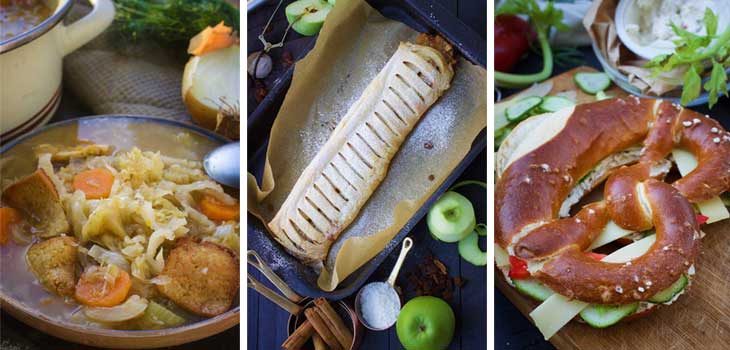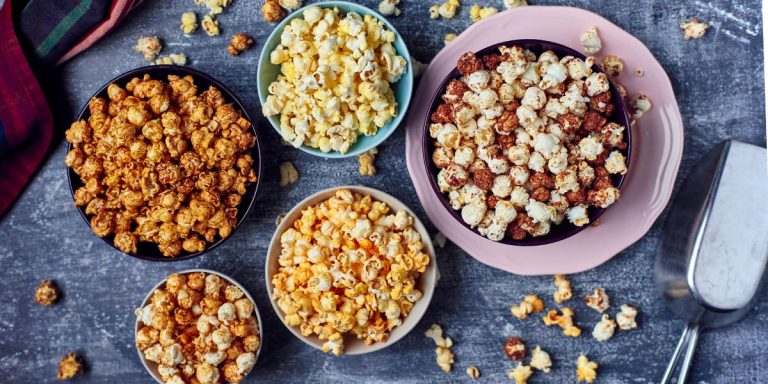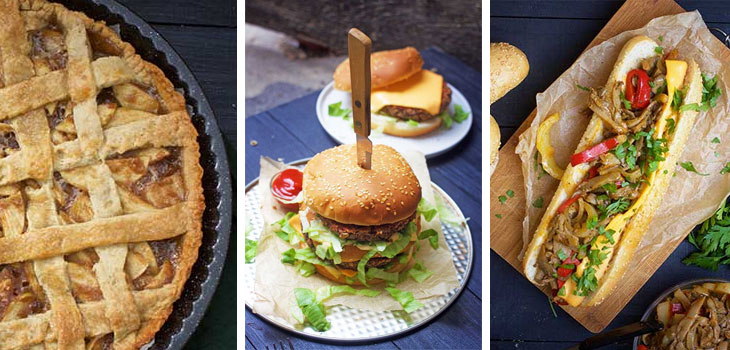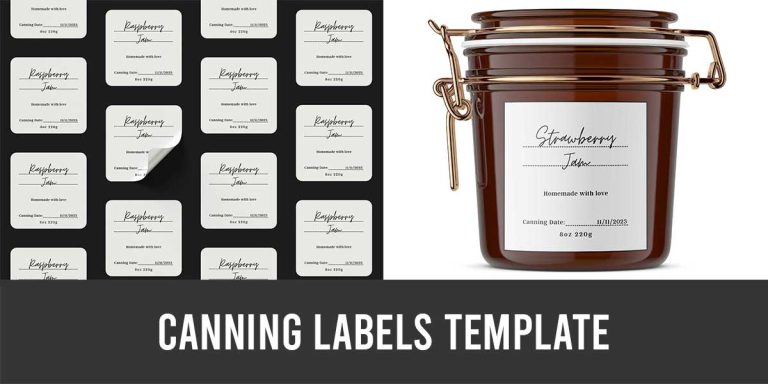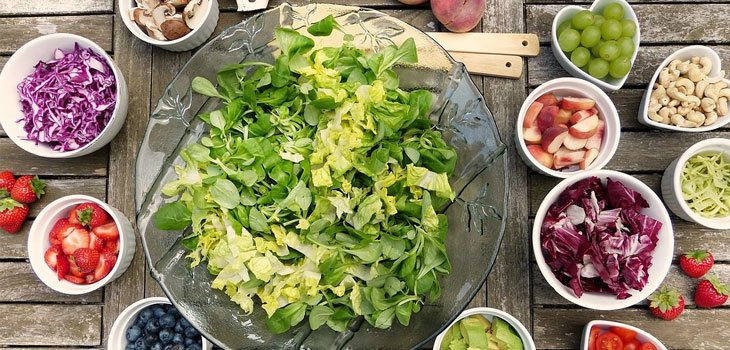Gluten-Free Diet Plan Guide | How to have a healthy gluten-free diet
If you want to eliminate gluten, make sure you check out this gluten-free diet plan guide, perfect for adopting a gluten-free diet.
You’re probably very familiar with the term “gluten-free” by now, as it became more and more popular. A lot of people are trying to keep this kind of diet because they want to remain fit and eliminate health issues. Let’s find out if the gluten-free diet is as beneficial for people who don’t suffer from the coeliac disease as it’s advertised.
Nowadays, the term has become extremely common. Health enthusiasts are switching to this type of diet to remain fitter and eliminate a host of health-related issues. But is the gluten-free diet as good as it’s advertised even for non-coeliac people?
Contents:
- What is a gluten-free diet?
- The benefits of a gluten-free diet
- Keep this in mind if you’re going gluten-free
- The Gluten-Free Diet
- Gluten-free recipes
- Avoid the pitfalls of a gluten-free diet
First of all, I must mention that I’m quite experienced regarding the gluten-free diet. I’ve been writing dedicated articles on a very popular website (the largest online community for coeliacs) here in Romania for more than three years. Thus, I’ve read dozens of studies, interviewed countless coeliac specialists and even went to different conferences. My opinion (just a personal opinion, I’m not a doctor) is that the gluten-free diet can have incredible health benefits only IF you stay away from processed foods as well. The gluten-free diet is the only known treatment for people who are gluten-intolerant, but it’s also good for individuals with other inflammatory diseases such as RA or skin issues and thyroid problems.
If you have any of these food allergies or intolerances and you have problems figuring out what to eat, I created these meal plans to help you! Thousands of people with food intolerances have already used them. Check out the details, here. Alternatively, if you’re looking for a convenient option, you can also consider ready-to-eat gluten-free meals that are delivered right to your doorstep.
For example, the gluten-free diet was very helpful to my mother. She had been struggling with Hashimoto’s for years and the discovery of the gluten-free diet has changed her life. I’m actually quite pleased with keeping a low gluten diet as well. I’m not 100% gluten-free but I do my best to avoid it whenever I can. I try to buy corn or rice pasta (which is also cheaper and healthier) and I eat mostly gluten-free bread instead of the normal one. I realized that these efforts have helped me keep my atopic dermatitis in normal limits and my usual bloating has pretty much disappeared as well.
It’s always best to discuss with your doctor or maybe even run some tests to see in you’re officially gluten intolerant before adopting a gluten-free diet. There’s always the possibility of you only being gluten sensitive, to which the gluten-free diet is also recommended. If you have any thyroid problems and the gluten tests come out negative, plenty of studies highly recommend to keep a gluten-free diet because it’s very helpful.
Let’s dive right in and find out all the things you need to know before adopting a gluten-free diet.
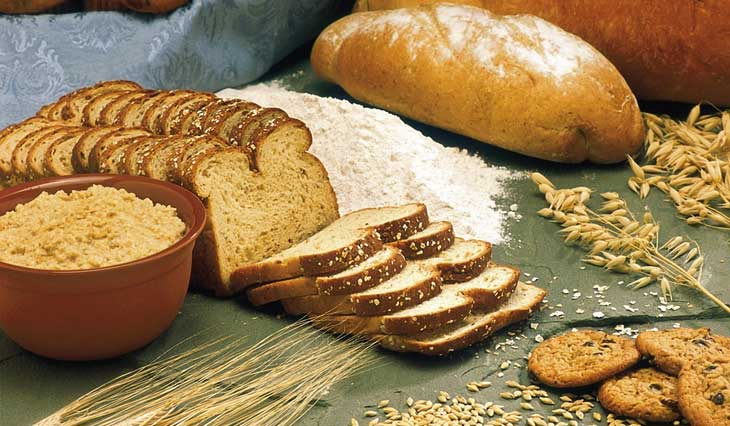
What is a gluten-free diet?
As the name also says it, a gluten-free diet excludes the protein gluten. This type of protein can be found in different grains such as wheat, rye, barley and some of their derivatives. The gluten-free diet is the only treatment for celiac disease because consuming gluten will create bad inflammation in the small intestines of those affected. The gluten-free diet will allow you to control these bad symptoms and even prevent the complications.
What purpose does it serve?
Even though this type of diet is absolutely necessary for coeliacs, other people who don’t have this disease can feel similar symptoms when consuming gluten, so the gluten-free diet will be efficient too. This is called non-celiac gluten sensitivity.
The benefits of a gluten-free diet
Starting a gluten-free diet means a big change in your diet, so you should have some patience with your body until it adapts. It will be hard at first because you will feel the burden of all the restrictions, but I’m sure you will get used to this pretty fast.
It’s always best to focus on all the good parts and the foods you are allowed to eat instead. You will be surprised to find out there are a lot of good gluten-free products and types of pasta available on the shelves. There are also a lot of specialty grocery stores that sell no-gluten products.
It’s a good idea to try and not eat a lot of processed foods because the gluten-free diet is most effective when you follow the same golden rules of any other healthy diet – this means to avoid big quantities of sugar, pasta, and bread.
If you have any of these food allergies or intolerances and you have problems figuring out what to eat, I created these meal plans to help you! Thousands of people with food intolerances have already used them. Check out the details, here.
Better Immune Function
It’s well-known that when the small intestine suffers from chaos, the flora balance of bacteria will suffer too, thus causing a big percentage of the immune problems and even chronic diseases.
Lowers Stress
A lot of gluten and wheat intolerant patients suffer from depression and different types of anxiety, so eliminating gluten may be a solution for a better life.
Reduces Inflammation
The immune response can be prevented by completely eliminating gluten from your diet. This will also stop the inflammation in the small intestine, which means less bloating and less cramping!
Improves Digestion
All the important nutrients are absorbed in the small intestine, which makes it a very important part of our bodies. When you cut out the gluten you protect the villi and you help your intestines better absorb these nutrients.
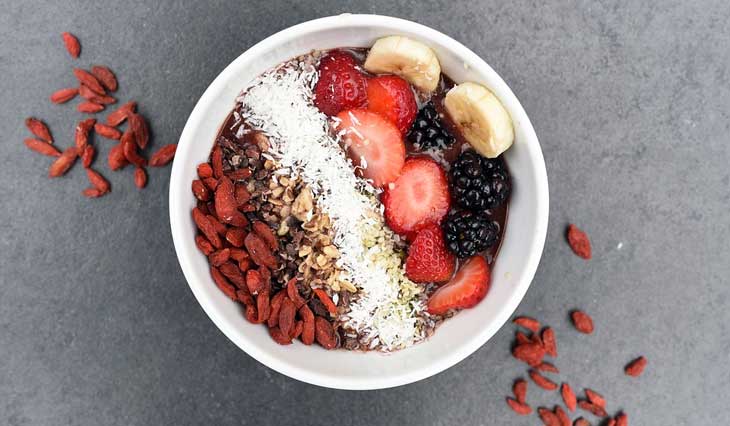
Boosts Energy
One of the most common issues for people who suffer from the coeliac disease is chronic fatigue. When you eliminate gluten, you will basically receive a good burst of energy. It’s well-known that the gut is a key element of our body’s health so keeping it in its best shape is essential.
Skin Care
It’s not uncommon for people who suffer from an undiagnosed coeliac disease to encounter skin problems such as psoriasis, eczema or different kinds of rashes. Eliminating gluten from your diet means saying bye-bye to those unpleasant itches!
Regulates Hormone Levels
Menstrual irregularity is another Celiac and gluten sensitivity symptom, along with missing periods or having severe ones. The immune system will act properly again once you start cutting all gluten sources from your diet and you will observe normal and balanced hormone levels.
Keep this in mind if you’re going gluten-free
Don’t forget to read the food labels when you shop
According to law, all packaged foods must have an ingredient list and allergen labeling – this means you can always see if a certain product is fit for a gluten-free diet or not. It must always be mentioned on the list of ingredients if a cereal that contains gluten was used in the making of that product, even if it’s a very small quantity. Make sure to look out if there’s any wheat, rye, spelt, barley, oats, Kamut or some other grains made by breeding together these grains. In some cases, it’s even easier to tell if a product has allergens because they’re written in bold letters.
Use gluten-free substitutes
Just because you cannot consume regular pasta, bread or crackers, this doesn’t mean you cannot find some great substitutes that are gluten-free. You can find these great alternatives in most grocery shops and supermarkets.
There are many gluten-free substitute foods for bread, pasta, biscuits, cereals and more. If you’re diagnosed with the celiac disease you can even get some of these staple foods based on a prescription.
Buy naturally gluten-free foods
It’s always a good idea to buy and consume foods that are gluten-free by default, such as fruits and veggies, fish, meat, cheese and eggs.
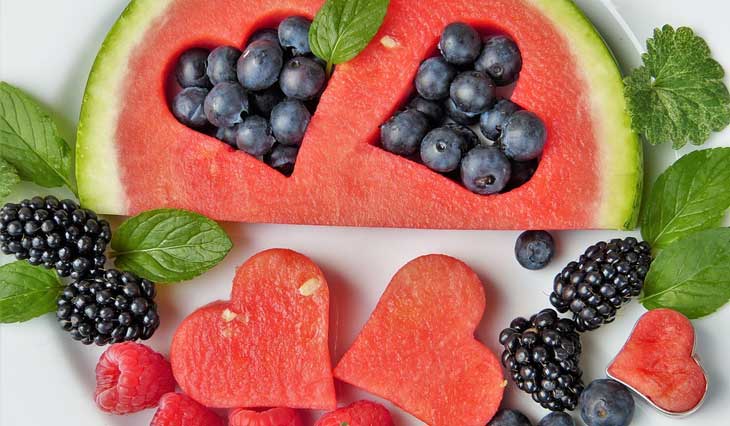
Enjoy naturally gluten-free grains and cereals
Despite rumors, following a gluten-free diet doesn’t mean excluding all types of cereals and grains. There are lots of naturally gluten-free grains which you can consume such as corn, polenta, buckwheat, quinoa, teff, amaranth, millet and tapioca.
Be careful to read the labels in order to make sure you’re only eating uncontaminated grains. You can always switch to polenta crumbs, rice noodles, corn pasta, gluten-free buckwheat and quinoa as a base for your cooking.
Avoiding certain types of alcohol is a must
You must also be careful about what types of alcohol you consume while you keep a gluten-free diet. Some gluten-free alcohols are wine, sherry, cider, port and liqueurs. You must pay attention to beer, ale, lager and stout because most of the time they may contain at least a small amount of gluten. Of course, you can find various kinds of gluten-free bears in some shops and even restaurants, but this must be written on their label, too.
Stay alert for cross-contamination
Don’t forget that your symptoms will be back even if a tiny amount of gluten is ingested, so you should always be careful not to get cross-contaminated with foods that have gluten. You can lower this risk by carefully washing all kitchen surfaces and using separate utensils and jars of butter, jam and other spreads. These could contain breadcrumbs which will cross-contaminate you. It’s always best to keep your gluten-free bread in a different bag or contain that the rest of your family.
Avoid sauces containing gluten
You must pay attention to sauces, stocks and some condiments because they may contain wheat flour, which is a source of gluten. If you will read the labels carefully you can avoid this and keep the risks of being contaminated with gluten at a minimum. You can try to make homemade sauces using corn flour or potato starch as gluten-free alternatives.
If you have any of these food allergies or intolerances and you have problems figuring out what to eat, I created these meal plans to help you! Thousands of people with food intolerances have already used them. Check out the details, here.
Gluten-Free Diet Guide
When you know the basic rules by heart, it’s easier to keep a gluten-free diet. Just follow the guidelines that I’ll give you below and start enjoying your gluten-free life.
Safe foods:
- (such as flour, grits, cornmeal and others)
- Millet, quinoa, soy, tapioca, amaranth, arrowroot, cassava, flax, polenta, fonio, teff, buckwheat (kasha)
- Simple rice in different forms, be it basmati, white, brown, wild etc.)
- All types of corn (such as flour, grits, cornmeal and others)
- All kinds of dairy that don’t have any add-ins, from plain yogurt, ice cream, milk to butter and cheeses.
- Gluten-free flours made from coconut, nuts, beans. Some examples are almond flour, amaranth flour, coconut flour, buckwheat flour, millet flour, chickpea flour. If the label says ‘gluten-free’ then you won’t risk getting cross-contaminated.tha
- Vegetable oils and canola
- Distilled vinegar but not malt vinegar
- Distilled alcohol. The gluten is removed in the process of distillation. Just make sure that they don’t contain any gluten ingredients which were added after this process.
- All kinds of fruits and vegetables, regardless if they’re fresh, canned or frozen.
- Seafood, meat, nuts, beans and legumes, eggs
- Some gluten-free fats are mono and diglycerides.
- Plain spices. Just make sure that they only have the natural spice and no other ingredients. Don’t confuse spices with seasonings (the latter might contain gluten).

Here’s a list of safe, gluten-free ingredients:
Glucose syrup, maltodextrin (even when it is made from wheat), silicon dioxide, oat gum, lecithin, food starch, citric acid, lactic acid, malic acid, dextrose, lactose, sucrose. Some ingredients that you can use in baking are cornstarch, guar and xanthan gums, tapioca starch, tapioca flour, potato starch, potato flour, arrowroot, vanilla.
Prohibited foods:
- Barley and malt are made from barley, which is not allowed. You must cross malt syrup, malt flavoring, malt vinegar and malt extract from your list of allowed foods.
- Spelt, kamut, triticale (a combination of wheat and rye), einkorn, farina, durum, semolina, matzo/matzah, couscous or any other food that contains wheat.
- Breads, cakes, cookies, pretzels, crackers, cookies, pizza dough, pasta – all these (and more) have wheat in their composition.
- All foods with the word “wheat” in their name such as hydrolyzed wheat protein and pregelatinized wheat protein. Buckwheat is an exception because it’s gluten-free.
- Floured or breaded poultry, seafood, meat and vegetables – there’s a high possibility that the breading contains wheat.
- Marinated meat, veggies or poultry. Avoid soy and teriyaki sauces.
- Foods that are fried in the same oil as foods that contain gluten. You must avoid cross-contamination.
- Licorice, because it’s made from wheat flour. Some other candies can contain wheat or barley too, so make sure to read the labels carefully.
Gluten-free recipes
Here are some of the gluten-free recipes you can find on my blog. Hope they’ll inspire you! 🙂
Avoid the pitfalls of a gluten-free diet
While keeping a gluten-free diet you must always be careful to not skimp on your nutrition and not lower your food intake! Here are some pitfalls that you should avoid at all times:
- As the gluten-free diet becomes more and more popular, lots of new gluten-free products are being introduced on the market, so you’ll have a big list of delicious alternatives. If you’ll only replace your usual foods with their gluten-free alternatives it will be very easy to continue with the same eating pattern. But you must keep in mind that most of these alternatives are full of sugars and refined flouts and they end up not having the basic nutritional value. Analyze the foods that you eat and try to find out how many gluten-free convenience items you have on your list, so you can cut some of them.
- Vegetables should be a big part of your diet because they’re rich in anti-inflammatory phytochemicals and antioxidants. These will help you strengthen your body. Make sure to include healthy portions of vegetables in your diet and try to spice things up with some new recipes if you feel bored.
- Fibers are nutritive to the beneficial bacteria found in the colon, help your body regulate the blood sugar levels and help your digestion as well. Some safe foods that are rich in fibers include beans, nuts, seeds and gluten-free pseudo-grains (buckwheat, for example). Many people make the mistake of lowering their fiber intake when starting a gluten-free diet and that’s a common pitfall. Don’t commit this mistake, as fiber will give you energy and even help you by reducing the chances of getting a chronic disease.
- Sweet cravings are a normal thing, although unpleasant. Foods with added sugars will cause inflammation and lots of digestive problems, so you should consume fruits, raw date truffles or frozen grapes instead.
- When excluding gluten from your diet you should replace it with an ingredient with the same nutritional value in order to not create unbalance in your diet.
Following a gluten-free diet will help you be healthier, regardless of rumors. If you’re tired of your immune and digestive problems or constant fatigue and exhaustion, you might want to try a gluten-free diet – this might change your life! It will be hard at first because of all the prohibited foods and drastic change in your diet, but trust me when I say that it will get better with time. You just need some time and patience and soon you will get used to gluten-free substitutes and alternatives.
Don’t forget: if you want to start a gluten-free diet make sure to go to an experienced doctor or dietitian who can help you along the way by answering all your questions and giving you all the guidance you need in order to have a healthy and balanced diet.
Photo sources:
- https://pixabay.com/en/tray-breakfast-muesli-fruit-fruits-2546077/
- https://pixabay.com/en/breakfast-cereal-milk-raspberries-2820796/
- https://pixabay.com/en/breakfast-muesli-healthy-grain-1209260/
- https://pixabay.com/en/breads-cereals-oats-barley-wheat-1417868/
- https://pixabay.com/en/fruit-fruits-heart-blueberries-2367029/

